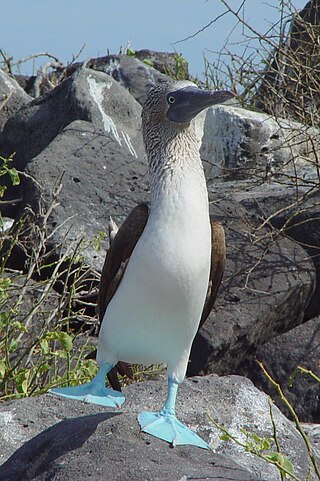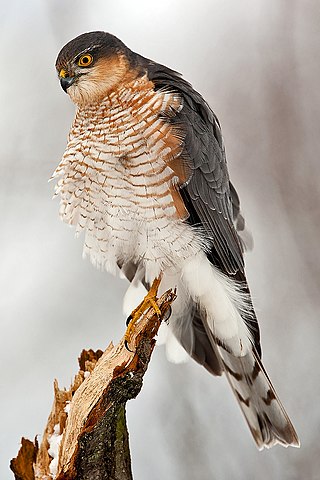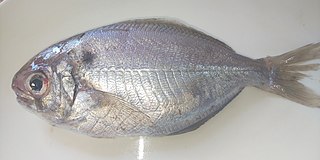
Penguins are a group of aquatic flightless birds from the family Spheniscidae of the order Sphenisciformes. They live almost exclusively in the Southern Hemisphere: only one species, the Galápagos penguin, is found north of the Equator. Highly adapted for life in the ocean water, penguins have countershaded dark and white plumage and flippers for swimming. Most penguins feed on krill, fish, squid and other forms of sea life which they catch with their bills and swallow whole while swimming. A penguin has a spiny tongue and powerful jaws to grip slippery prey.

The International Union for Conservation of Nature (IUCN) Red List of Threatened Species, also known as the IUCN Red List or Red Data Book, founded in 1964, is an inventory of the global conservation status and extinction risk of biological species. A series of Regional Red Lists, which assess the risk of extinction to species within a political management unit, are also produced by countries and organizations.

A booby is a seabird in the genus Sula, part of the family Sulidae. Boobies are closely related to the gannets (Morus), which were formerly included in Sula.

Accipiter is a genus of birds of prey in the family Accipitridae. Most species are called sparrowhawks, but there are many sparrowhawks in other genera too, such as Tachyspiza.

The snowcocks or snowfowl are a group of bird species in the genus Tetraogallus of the pheasant family, Phasianidae. They are ground-nesting birds that breed in the mountain ranges of southern Eurasia from the Caucasus to the Himalayas and western China. Some of the species have been introduced into the United States. Snowcocks feed mainly on plant material.

The Pacific rudderfish is a marine fish also known by such names as Japanese butterfish, melon seed, wart perch, ibodai or simply but ambiguously as butterfish.

Anomala is a genus of shining leaf chafers in the family of beetles known as Scarabaeidae. There are at least 1,200 described species in Anomala.

Elaphe schrenckii is a species of nonvenomous snake in the family Colubridae. The species is indigenous to Northeast Asia.

Zombia antillarum, commonly known as the zombie palm, is a species of palm tree and the only member of the genus Zombia. It is endemic to the island of Hispaniola in the Greater Antilles. Usually found in dry, hilly areas of northern and southern Haiti and the northwest of the Dominican Republic, Z. antillarum is a relatively short fan palm with clustered stems and a very distinctive appearance caused by its persistent spiny leaf sheaths. Threatened by habitat destruction in Haiti, Z. antillarum is a popular ornamental species due to its distinctive appearance, low maintenance requirements and salt tolerance.
This article is a list of biological species, subspecies, and evolutionary significant units that are known to have become extinct during the Holocene, the current geologic epoch, ordered by their known or approximate date of disappearance from oldest to most recent.
Wettinia anomala is a species of flowering plant in the family Arecaceae. It is found in Colombia and Ecuador.
Amanoa anomala is a species of plant in the family Phyllanthaceae. It is endemic to Ecuador. Its natural habitat is subtropical or tropical moist lowland forests.

Symplocos anomala is a plant in the family Symplocaceae.

Elaphe anomala commonly known as the Korean rat snake, GuReongEe is a non-venomous species of colubrid snake known from China and Korea. Its common names include Amur ratsnake, southern Amur ratsnake. It is a semi-arboreal snake that can be found in grasslands, dry scrub, rocky areas, and on the banks of rivers and lakes. It grows to 150–180 cm (59–71 in).
The bighead searsid is a species of tubeshoulder fish.











